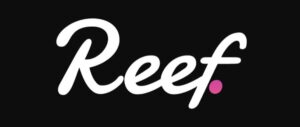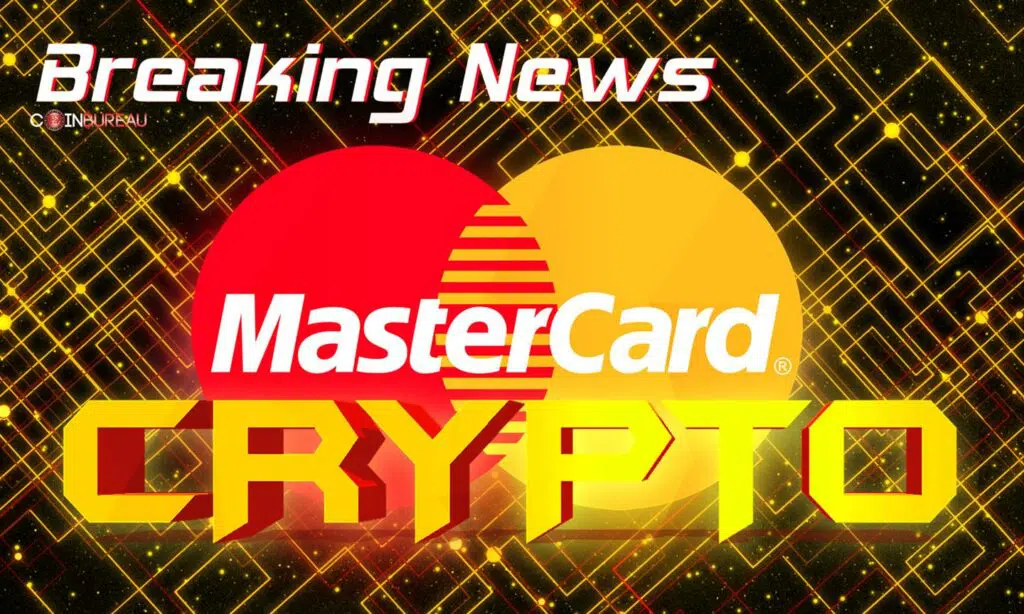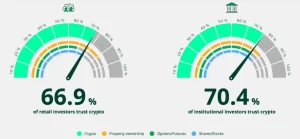You might be surprised to know that cooperation is very common in the cryptocurrency space. This is easy to forget given how vicious competition can be. A large part of this is because crypto is a new asset class. For the time being, it is more advantageous to cooperate than compete. When it comes to cooperation in the crypto space, you would be hard pressed to find any project better than NEAR Protocol.

NEAR Protocol might sound like a familiar name to you if you spend a lot of time on YouTube. This is because they are the hosts of the Whiteboard Series where developers from some of the largest and most successful cryptocurrency projects explain how their blockchains work in detail. The talented NEAR Protocol team has consequently used this knowledge to their advantage to create a serious contender for the best smart contract compatible cryptocurrency.
A brief history of NEAR Protocol
NEAR Protocol is the product of two brilliant minds: Alexander Skidanov and Illia Polosukhin. The pair met in 2018 thanks to the famous Y Combinator start up accelerator program. For those unfamiliar, Y Combinator is responsible for kickstarting some of the largest projects in tech and crypto including Coinbase, Dropbox, Airbnb, Filecoin, and even Reddit.
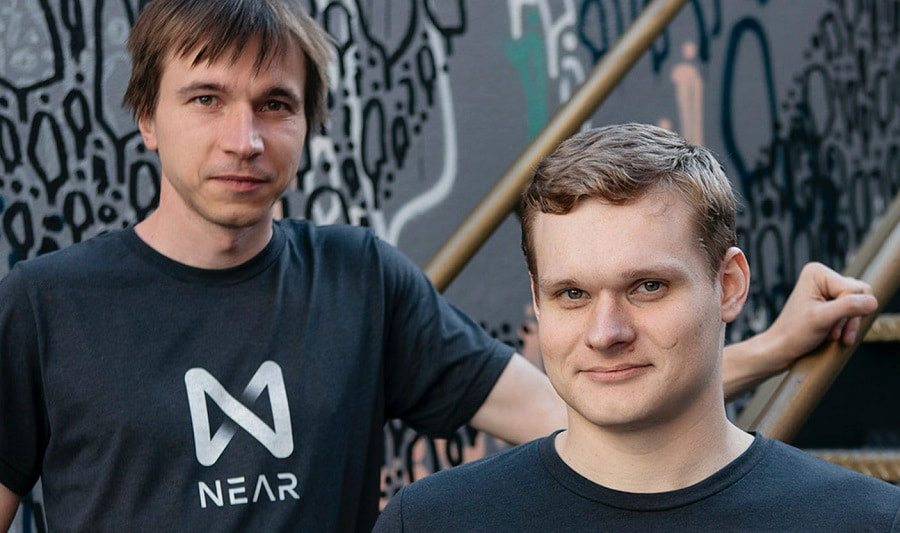
Alex (left) and Ilia (right). Image via TechCrunch
Both Alex and Illia are packing some serious credentials. Alex is a former software engineer at Microsoft and was the director of engineering at MemSQL before starting NEAR. Illia used to work as an engineering manager in Google’s famous Research department where he worked on language technologies that are now used in Google Translate.

A few members from the NEAR team (AKA the Near Collective).
It should come as no surprise then that Alex and Illia were able to grow their team from 2 to 10 within a day of announcing NEAR Protocol in July 2018. They also secured around 15 million dollars of funding before they had even developed anything, and this was during the bear market! The team has since grown to over 50 and includes multiple International Collegiate Programming Contest medalists and finalists.
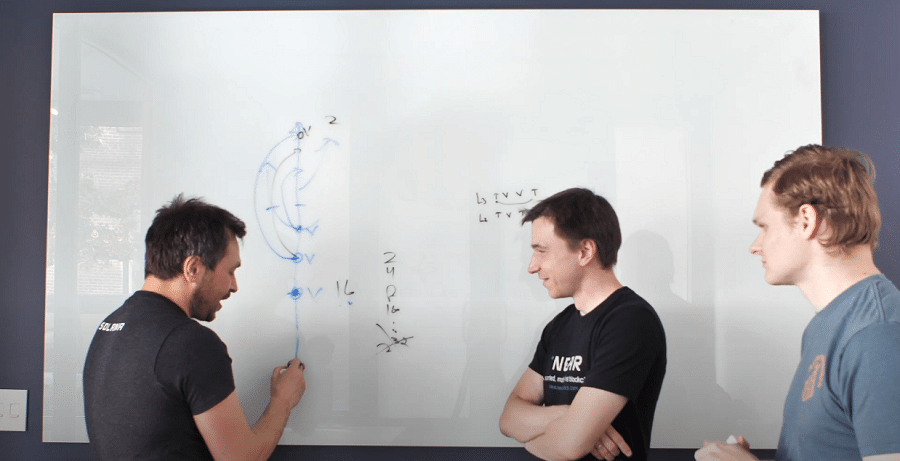
Solana on NEAR’s Whiteboard Series. Image via YouTube
Being based in San Francisco put the NEAR Protocol team next door to developers from projects like Ethereum, Solana, Cosmos, and Polkadot. Primarily as a consequence of their successful Whiteboard Series on YouTube, NEAR team was able to capitalize on these connections to release their initial main net in April this year. The final version of the main net was released on October 13th, realizing Alex’s vision of catching up to other next generation blockchains in the crypto space within 2 years.
What is NEAR Protocol?
NEAR Protocol (also referred to as NEAR) is a cryptocurrency blockchain with smart contract functionality. It is designed to be developer friendly and facilitate the creation of decentralized applications. NEAR is also interoperable with Ethereum.

NEAR uses a sharding mechanism called Nightshade and a block generation mechanism called Doomslug to process over 100 000 transactions per second. Transaction fees on NEAR are so low that they require a special unit of measurement called ‘yocto’ to quantify.
The NEAR blockchain was developed by the NEAR Collective, a group of over 50 talented developers located around the world. With the release of the NEAR main net in mid-October 2020, partial ownership of the NEAR blockchain was given to NEAR token holders.
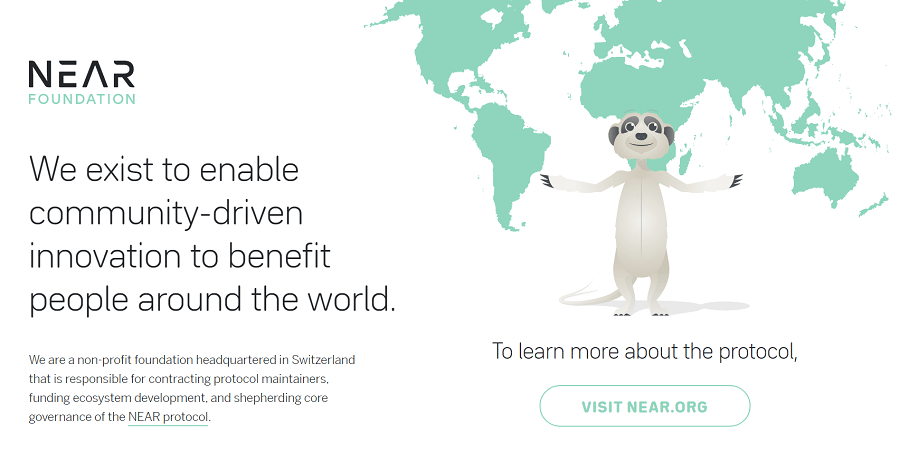
The NEAR Foundation, a Swiss non-profit, currently oversees the governance and development of the NEAR blockchain. It consists of notable individuals in the cryptocurrency space including NEAR co-founder Illia Polosukhin. As time goes on, full control of the blockchain will be given to NEAR token holders. This will turn NEAR into a decentralized autonomous organization (DAO).
How does NEAR Protocol work?
NEAR is a delegated proof of stake blockchain that uses sharding to optimize performance. However, unlike sharding in other cryptocurrencies such as Polkadot, all shards on NEAR are viewed as part of the same blockchain. NEAR is also interoperable with Ethereum using NEAR’s Rainbow Bridge.

A technical explanation of Nightshade.
This is all thanks to a mechanism called Nightshade. With Nightshade, only a snapshot of the current state of each shard is added to a block on the NEAR blockchain. Each shard is sustained by its own set of validator nodes, which broadcast the state of their shard every time a block is produced.
The easiest way to visualize this is as an intersection of multiple roads. The intersection itself is the NEAR blockchain, and each road is a shard. Moreover, shards on NEAR are able to work in parallel since the transactions being executed on them do not overlap. This significantly improves efficiency.

A technical explanation of Doomslug.
Another important component of NEAR is a mechanism called Doomslug. Without getting technical, this makes it possible for validator nodes on the network take turns generating blocks. This happens every epoch, and each epoch is 12 hours long. A new block is generated on NEAR roughly every second.
Block rewards on NEAR come from inflation which is currently around 5% per year (more on this later). 90% of every block reward goes to staking validators and delegator staking pools, and the remaining 10% goes to the NEAR treasury which is currently managed by the NEAR Foundation.
NEAR Protocol Staking
If you want to become a validator node on NEAR, you will need to stake NEAR tokens. The exact amount you need to stake depends on how many tokens are being staked by other validators within a given shard. This also determines your cut of block rewards which are paid out every epoch (12 hours).
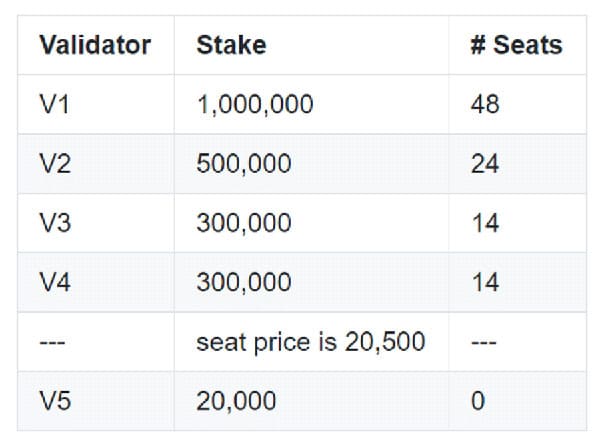
An example of the cost of a seat on a shard.
Each shard on NEAR contains 100 seats, and you must have at least 1 seat to be a validator. The cost of each seat is determined by the total amount of NEAR being staked (e.g. take the total stake in that shard and divide it by 100, and that is the cost of the seat). Misbehaving validators risk losing part of their stake (slashing). Validators and delegators can choose to unstake at any time.
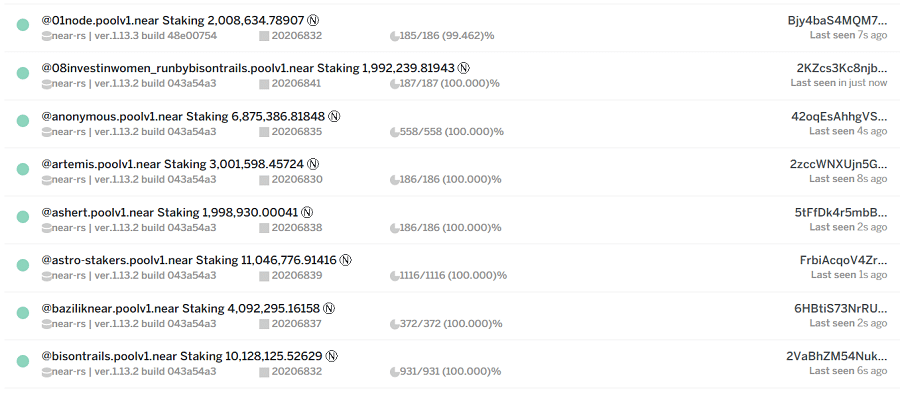
NEAR’s “staking pools” (AKA validators)
This design is to incentivize validator nodes to secure newer or “smaller” shards where the barrier to entry is lower. If you do not have the capital to buy enough NEAR tokens to secure a seat, you can convince delegators to delegate their tokens to you. Delegators use staking pools to do this and get a cut of block rewards from the validator(s) they are staking on. You can read more about staking on NEAR here.
NEAR Protocol Governance
As of October 13th, NEAR is governed by NEAR community. NEAR’s exact governance structure is currently in development. However, it appears that all proposals will be tabled, discussed, and voted on using NEAR’s dedicated governance board.

NEAR’s governance board.
One interesting thing to note is that the NEAR blockchain currently operates as a single shard. If and when the community votes to enable additional shards, an automated mechanism known as Dynamic Resharding will be activated which will create, merge, and/or destroy shards as required by the network.
Governance and development is currently overseen by the aforementioned NEAR Foundation. The NEAR Foundation also currently custodies NEAR’s treasury funds and can decide how they are spent. Once a governance mechanism is hammered out, the community will have total control over these elements.
NEAR Cryptocurrency
NEAR is a cryptocurrency native to the NEAR blockchain. It is used for staking by validator nodes and delegators on the network. Although block rewards for validators and delegators come from a 5% annual inflation rate, NEAR tokens are burned to pay for network fees.

While network fees on NEAR incredibly small, given enough network activity the NEAR token becomes a deflationary asset. Annual inflation turns to 0 if the network is processing over a billion transactions a day and can go below -2% if over 2 billion transactions are being processed per day.
NEAR Protocol ICO
NEAR’s ICO took place in August 2020 on CoinList. It was postponed by a day due to overwhelming demand for the token. The NEAR ICO sold 120 million NEAR tokens at an average price of around 30 cents, raising around 33 million USD. This accounted for 12% of NEAR’s total initial supply of 1 billion tokens. Depending on what price they were purchased, these ICO tokens have a 1-2 vesting schedule.
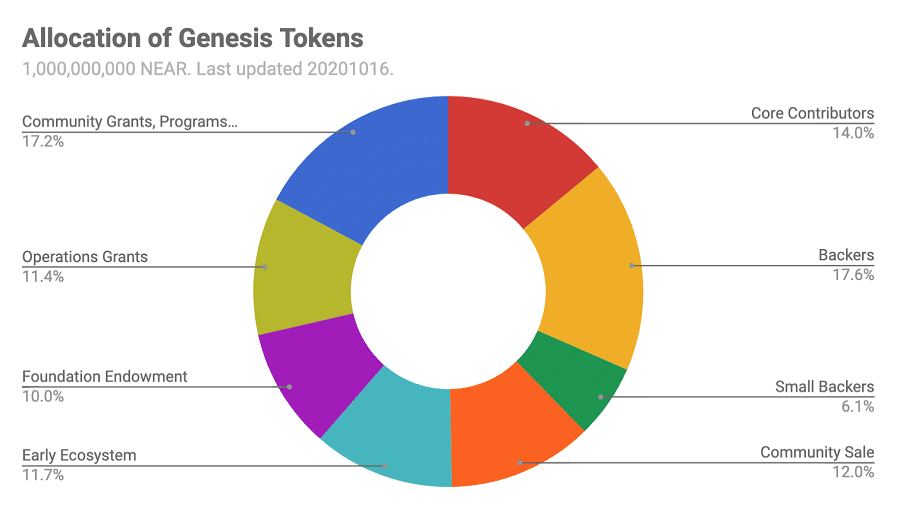
Of NEAR’s remaining initial supply, 17% has been reserved for Community Grants and Programs. 14% of NEAR’s initial supply has been allocated to Core Contributors (the NEAR team). 17.6% of NEAR’s initial supply was sold to Prior Backers. These tokens were sold during 7 private funding rounds which go as far back as 2017. Together these raised over 35 million dollars.
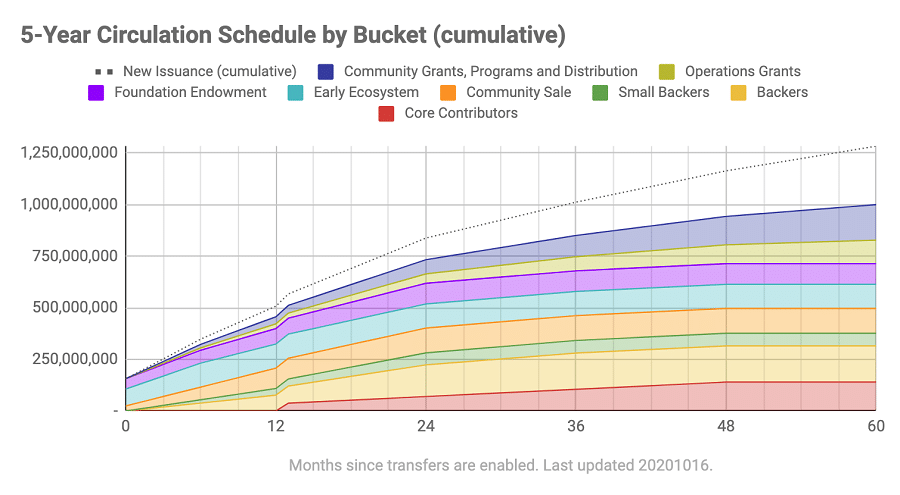
Emission schedule for the NEAR token
11.7% of NEAR’s initial supply will go to Early Ecosystem initiatives. 10% of NEAR’s initial supply has been allocated to the NEAR Foundation. The NEAR Foundation will be allowed to delegate these tokens to validators on the NEAR network. All the categories above are subjected to various lock up schedules which last anywhere from 3 months to five years.
NEAR Cryptocurrency Price Analysis
Although NEAR’s ICO took place in August, it was not until the main net launch on October 13 that token transfers were available. On that day, NEAR was trading for almost 2$USD on some exchanges, a cozy 6x from its ICO price.

NEAR cryptocurrency price history. Image via CoinMarketCap
However, price has fallen significantly since then – down to around 70 cents USD. NEAR’s short price history does not show a clear price trend for now.
Where to get NEAR cryptocurrency
If you are looking to get some NEAR tokens, your options are essentially limited to Binance and Huobi for the time being. Liquidity is very high on both exchanges, though the total 24-hour trading volume is not all that impressive.

NEAR cryptocurrency trading pairs. Image via CoinMarketCap
Also keep in mind that NEAR is subject to a 5% annual inflation rate for the time being, so you may be better off staking than simply holding or trading the tokens (not financial advice!).
NEAR Cryptocurrency Wallets
There are not many wallets available for NEAR because the cryptocurrency is so new. For mobile wallets your only options are currently the Trust Wallet and the Math Wallet.

The NEAR web wallet
NEAR also offers their own web wallet but it is still in development, so use it with caution. Whatever you do, do not leave your NEAR tokens on a cryptocurrency exchange. Not your keys – not your crypto!
NEAR Protocol Roadmap
NEAR’s development has been very intense since the project began in late 2018. After multiple test nets in 2019, NEAR began rolling out its main net in April 2020. This consisted of three stages: MainNet POA, MainNet (Restricted) and MainNet Community Governed.

MainNet POA focused on onboarding validators and network participants. Staking was not enabled and only the NEAR Foundation was allowed to transfer tokens. In MainNet POA, staking was enabled but not token transfers. The first vote on NEAR was also held to decide when to launch the final version of the main net.
The NEAR community voted to launch the unrestricted MainNet on October 13th. As mentioned earlier, NEAR is currently in the process of handing over full control of the blockchain to NEAR token holders. During this “Post Mainnet” phase, the NEAR team is looking to implement a few additional features.

The “Roadmap” section in the NEAR Protocol whitepaper.
Although many of these are technical, the NEAR whitepaper notes more ambitious future development milestones. Three of these are worth noting. The first is to incorporate zero knowledge technology like Zcash to allow for private transactions on the NEAR blockchain.
The second possible addition to NEAR is private shards. This would make it possible for certain groups or entities to capitalize on the security and speed of the NEAR blockchain while keeping their activities private from the rest of the network.
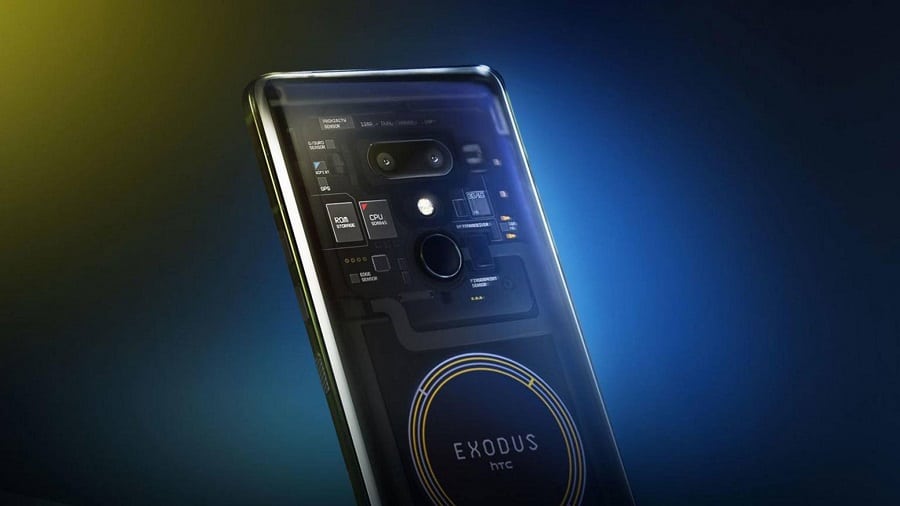
The Exodus blockchain phone by HTC. Image via Technology Review
The final possible addition to NEAR that is worth noting is the introduction of mobile nodes. Using phones to power blockchains is nothing new, but this technology has been limited due to poor mobile internet connections and lackluster phone hardware (don’t forget the drain on battery life!).
However, mobile integration is something that has been on the mind of NEAR co-founder Alexander Skidanov since the project began. Realistically, by the time mobile phones and networks become efficient enough, the decision to implement this feature will be up to the vote of the NEAR community.
Why we cheer for NEAR
NEAR Protocol has a lot going for it. It has a solid team, plenty of funding, and has lots of friends in the cryptocurrency space that has helped NEAR make the most of the first two facts. There is only one thing that it has not yet failed to do, and it is a critical component to being a successful cryptocurrency project: generate hype.

NEAR’s currency ranking in CoinMarketCap
As a result of trying to catch up with other smart contract cryptocurrencies in the space, NEAR has sacrificed marketing in favor of development. This puts it in the same category as other incredibly promising cryptocurrency projects such as Loopring which have flown under the radar due to a lack of exposure. To be fair this has paid off, as NEAR has some of the most impressive stats of any cryptocurrency blockchain out there right now.
Also, it is questionable whether focusing on other projects is the proper way to develop your own. Cooperation is nice but focusing on what the competition is doing can easily become the equivalent of buying the top because of FOMO and selling the bottom because of FUD. Going along with the herd is not the strategy for success in almost every context.

That said, the tide seems to be turning for NEAR. A Binance listing is a big deal in the cryptocurrency space, and that was one of the first places the NEAR token was available for trading after launch. It is almost certain that more exchanges will begin listing the token which will only serve to drive awareness of the project and increase liquidity for traders.
Whether NEAR could ever dethrone Ethereum or even catch up to Polakdot is questionable but certainly not impossible. If possible, NEAR should instead focus on carving out its own niche instead of trying to spar with the big guys. If it can do this with the support of its community and a bit of marketing magic, the future could be very, very bullish for NEAR.
Featured Image via Shutterstock & NEAR
Disclaimer: These are the writer’s opinions and should not be considered investment advice. Readers should do their own research.
- &
- 000
- 100
- 2019
- 2020
- 7
- accelerator
- accelerator program
- activities
- Additional
- ADvantage
- advice
- Airbnb
- alex
- All
- applications
- April
- around
- asset
- AUGUST
- Automated
- autonomous
- battery
- BEST
- Billion
- binance
- Bit
- blockchain
- Blog
- board
- Bullish
- buy
- Buying
- capital
- Catch
- Co-founder
- CoinBureau
- Common
- community
- competition
- component
- Connections
- contest
- contract
- Credentials
- crypto
- cryptocurrencies
- cryptocurrency
- Cryptocurrency Exchange
- cryptocurrency trading
- Currency
- Current
- Current state
- DAO
- dapp
- data
- day
- deal
- decentralized
- Decentralized Applications
- Demand
- Design
- destroy
- detail
- develop
- Developer
- developers
- Development
- Director
- dollars
- Dropbox
- Early
- ecosystem
- efficiency
- engineer
- Engineering
- ethereum
- exchange
- Exchanges
- Exodus
- fair
- Feature
- Features
- Fees
- Filecoin
- financial
- First
- Focus
- FOMO
- founders
- Francisco
- FUD
- full
- funding
- funds
- future
- google translate
- governance
- grants
- Group
- Grow
- Hardware
- High
- history
- How
- HTC
- HTTPS
- ICO
- image
- Including
- Increase
- inflation
- integration
- International
- Internet
- investment
- IT
- July
- keeping
- keys
- knowledge
- language
- large
- launch
- Limited
- Liquidity
- listing
- Long
- Marketing
- Markets
- math
- Members
- Microsoft
- million
- Mobile
- mobile phones
- months
- Near
- net
- network
- networks
- nodes
- non-profit
- Offers
- Onboarding
- Opinions
- Options
- Other
- Pay
- performance
- phones
- platform
- Plenty
- Polkadot
- Pools
- poor
- power
- price
- private
- Produced
- Product
- Program
- Programming
- Programs
- project
- projects
- proof
- radar
- readers
- research
- REST
- Rewards
- Risk
- roads
- rounds
- San
- San Francisco
- security
- Series
- set
- sharding
- Short
- shutterstock
- slashing
- small
- smart
- smart contract
- Snapshot
- So
- Software
- Software Engineer
- Solana
- sold
- Space
- speed
- spend
- stake
- Staked
- Staking
- start
- State
- stats
- Strategy
- success
- successful
- supply
- support
- surprise
- Swiss
- tech
- Technical
- Technologies
- Technology
- test
- The Future
- Tide
- time
- token
- Tokens
- top
- Traders
- Trading
- transaction
- Transaction Fees
- Transactions
- treasury
- USD
- vision
- volume
- Vote
- W3
- Wallet
- Wallets
- web
- Web3
- Website
- Whitepaper
- within
- Work
- world
- worth
- Y Combinator
- year
- years
- youtube
- Zcash
- zero


